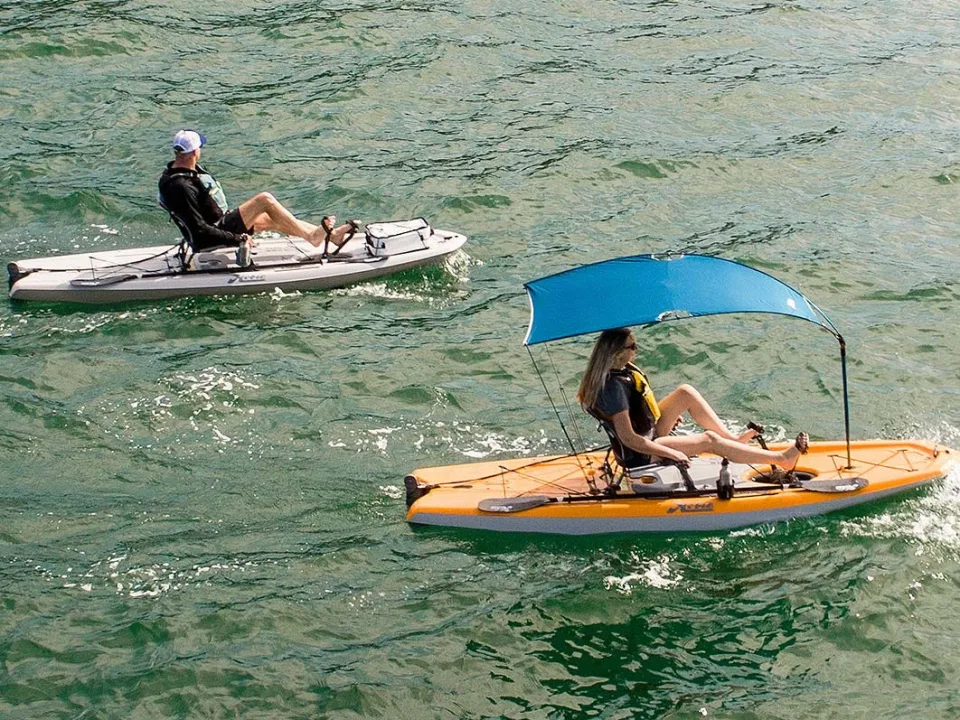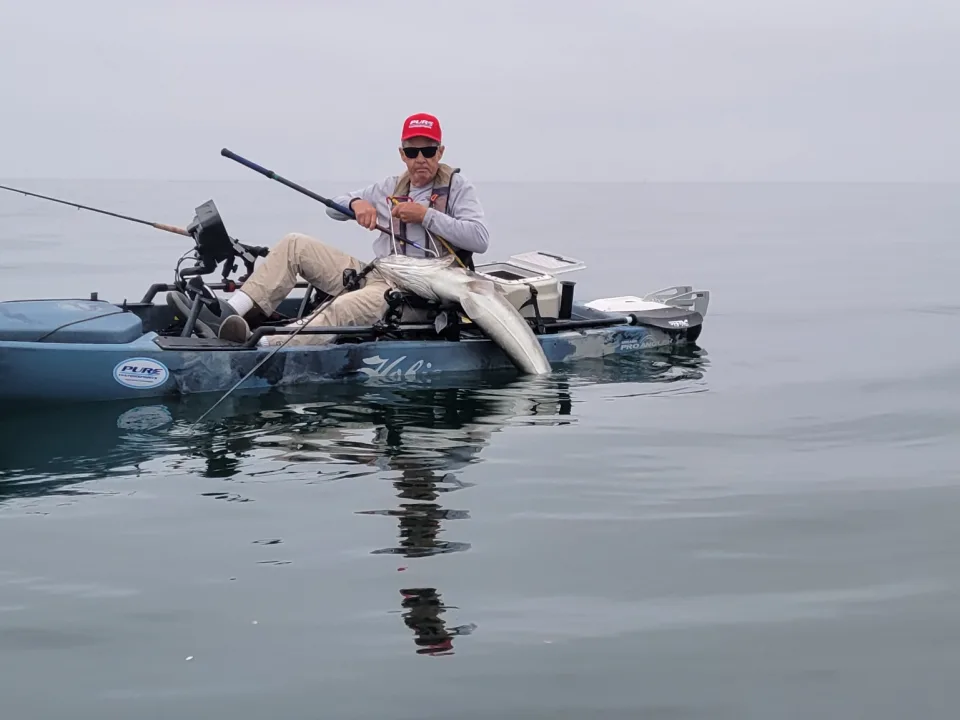Jet Ski Adventure Captured by One of our Customers
September 8, 2014Off Shore Jet Ski Fishing for Opah
September 29, 2014California Gray Whales are amazing creatures. They spend their summers chowing down in Alaskan seas then travel to Baja California to party and have kids in the winter, then travel back to Alaska in the spring. Subsequently, a large number of them pass within kayaking distance of Dana Point Harbor in the late fall through late spring.
The Gray Whale migration has three periods: southbound (late November to late January), early northbound (late January to early April), late northbound (mid April to late May).
During the southbound and early northbound periods, the Gray Whales are looking to get to their destination. The Grays pass outside the kelp beds northwest of the Dana Point headlands. They pass close to the San Juan Rock whistle buoy, then they head offshore, passing close to A Mark on their way south. They follow roughly the same path (just in opposite directions) on the way north.
Look for the Gray Whale’s spout and or their back and tail. They are kind of stealthy as they swim underwater for a couple minutes, then surface for three or four breaths. On the last breath, they often raise there tail out of the water (fluke). After the fluke, they will stay underwater for a couple more minutes. I can usually keep up with two or three of these cycles (3.5 to 4 knots). Gray Whales will also breach, come out of the water and fall sideways, or “spy hop”, come straight out of the water. This is thought to allow the whale to look around for landmarks. They do this a lot around the Dana Point Headland.
The following track has gotten me close to the most Grays during the southbound and early northbound periods. Start at the Dana Point Harbor entrance. Head 210 degrees magnetic to A Mark, approximately one mile offshore. At A Mark, turn right to 330 degrees magnetic. This will take you a couple hundred yards outside the San Juan Rock buoy (about one and a half miles). At the buoy take a slight right turn to 310 degrees magnetic and follow a line a couple hundred yards outside the kelp beds. Continue as far as you feel comfortable (the Ritz Carlton Hotel is about one mile from the buoy, Three Arch Bay is about two miles from the buoy) then turn around and follow the path back to the San Juan Rock buoy. When you get to the buoy, turn toward the mouth of the harbor and head in. This will give you the maximum benefit of going with the swells and wind for the final leg. About eighty percent of the Gray Whales I’ve seen have been within a couple hundred yards of this track.
During the late northbound period, the mother whales (cows) are taking their time with the newborn babies (calves). They swim in pairs and, often, in groups with other cow/calf pairs. They swim much closer to shore and occasionally stop to nurse and, it’s thought, show the calves landmarks that they will use to navigate on their future migrations. It is believed that the Dana Point headland is one of these navigation landmarks. That is why they often breach and or “spy hop” at the point.
The following track has provided lots of good viewing of northbound cows and calves. (Remember don’t get so close that you are harassing the whales.) Start at the mouth of Dana Point Harbor. Head to the green harbor entry buoy, about 1/4 mile to the west of the entry. Follow a line parallel to the harbor jetty, heading toward San Juan Rock. When you start to come across kelp attached to the bottom, you have a choice: 1. Go right and pass by San Juan Rock on it’s left or right, then continue past the Dana Point headland and stay inside the kelp beds as you go up the coast; 2. Go left around the kelp bed and pass close to the San Juan Rock whistle buoy, stay close to the outside of the kelp beds as you continue up the coast.
Often, I will be fishing just outside the kelp beds at the San Juan Rock buoy and the cow/calf groups will pass right by. So the alternative to searching for the northbound Grays is to just go to the buoy and sit. Eventually the whales will come to you. Watch for the whale watching boats and you should be able to tell when the whales are coming your way. If you find yourself directly in the path of a nearby whale, do nothing. The whales know you are there and will either avoid you themselves, or even come by to check you out. If you move you could disturb them more than if you just sit still. Remember, don’t harass the whales.
Note: Back in the commercial whaling days, Gray Whales were known as “Devil Fish” because the cows would so fiercely defend their calves. Now a days it actually seems like the cows want the calves to interact with humans. I’ve had two encounters when, I didn’t see them coming, and the calves swam right under me with the cow near by. Wow!



